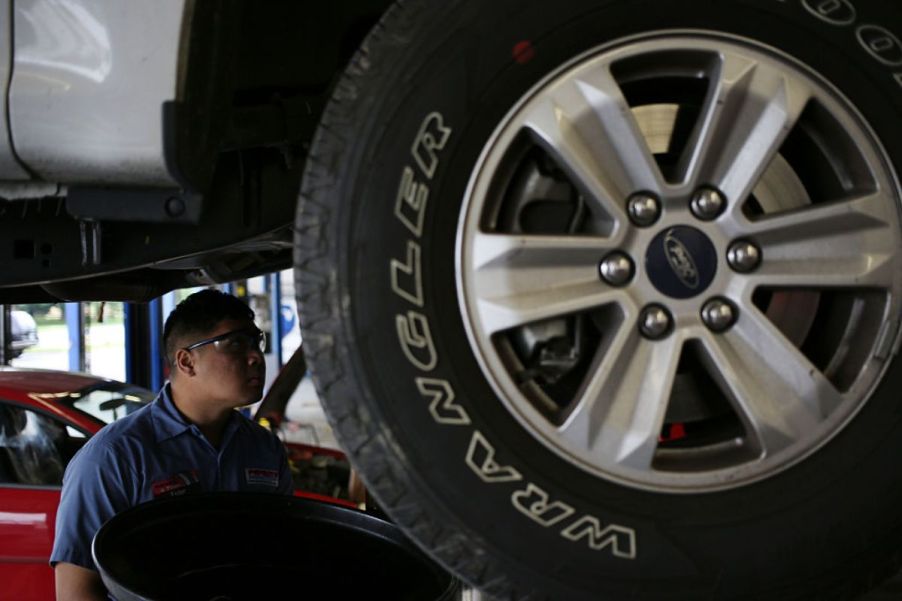
How Much Does It Cost to Replace a CV Axle?
As a car owner, your routine automobile maintenance items should include changing the engine oil, windshield wiper blade replacement, and tire rotation. In addition, some auto parts, like engine hoses, belts, and battery cable connections, require periodic inspection. We encourage you to add your CV, or constant velocity, axle boots to your regular inspection list to help prevent a $1,000 repair from turning into something much more costly.

What is a CV axle, and what does it do?
NewParts says that a CV axle links your car’s transmission and its drive wheel or wheels unless you have a vehicle with a solid axle driveline. Most front-wheel drive cars, those with all-wheel drive, and some rear-wheel-drive independent suspension vehicles use CV axles to deliver power to drive wheels that articulate, turning left and right while the suspension moves up and down.
The CV axle typically utilizes two moving joints covered by rubber boots to protect them from dirt and grime while containing the grease that lubricates the joint. However, once the rubber boot becomes damaged or separated from the CV joint, the CV axle won’t last much longer.
Therefore, inspecting these rubber boots for damage and replacing the axle as required is essential to prevent damage to your transmission or wheel hub assembly.
How much does it cost to replace a CV axle?
Some factors, such as your location and vehicle specifics, affect the cost of replacing a CV axle. RepairPal estimates professional repair shop costs around $1,000, with labor costs under $200 and replacement auto parts between $800 and $900.
However, FIXD estimates the job should cost $672 at most. The cost of the replacement parts is the most significant difference between the two estimates, which is understandable with the wide variety of vehicles using CV axles.
You might be curious if you can DIY a CV axle replacement. FIXD rates the project difficulty level at intermediate, whereas TheDrive rates the required skill level at upper-level beginner and estimates one to two hours for the job.
If you possess the skill level needed, the next obstacle is the specialized tools and a level, paved, or concrete surface required to do the job. Doing this job on a dirt, grass, or gravel surface is not a good idea.
How often should I replace my car’s CV axle?
While a CV axle should last at least 100,000 miles and possibly the lifetime of your car, experts agree that once the rubber boot protecting the CV joint cracks or tears, the end is near.
Most automakers do not include CV axle replacement in a new car’s published maintenance schedule since they only need attention if the rubber boot fails. So periodically inspecting the CV axle is a good idea.
There are four warning signs of a failing CV axle, including:
- Grease or lubricant leaking from any CV axle rubber boots.
- Popping or grinding noises emanating from the area adjacent to the vehicle’s drive wheels, particularly when accelerating through a turn.
- A clunking noise centered near the drive wheels whenever letting off the accelerator without applying the brakes.
- Vibration at highway speeds.
Except for number one, any of these symptoms require further investigation and possible CV axle replacement. If the rubber boots are leaking or the other symptoms relate to a failed CV axle, you should replace it sooner rather than later to prevent further damage to other vehicle components.



